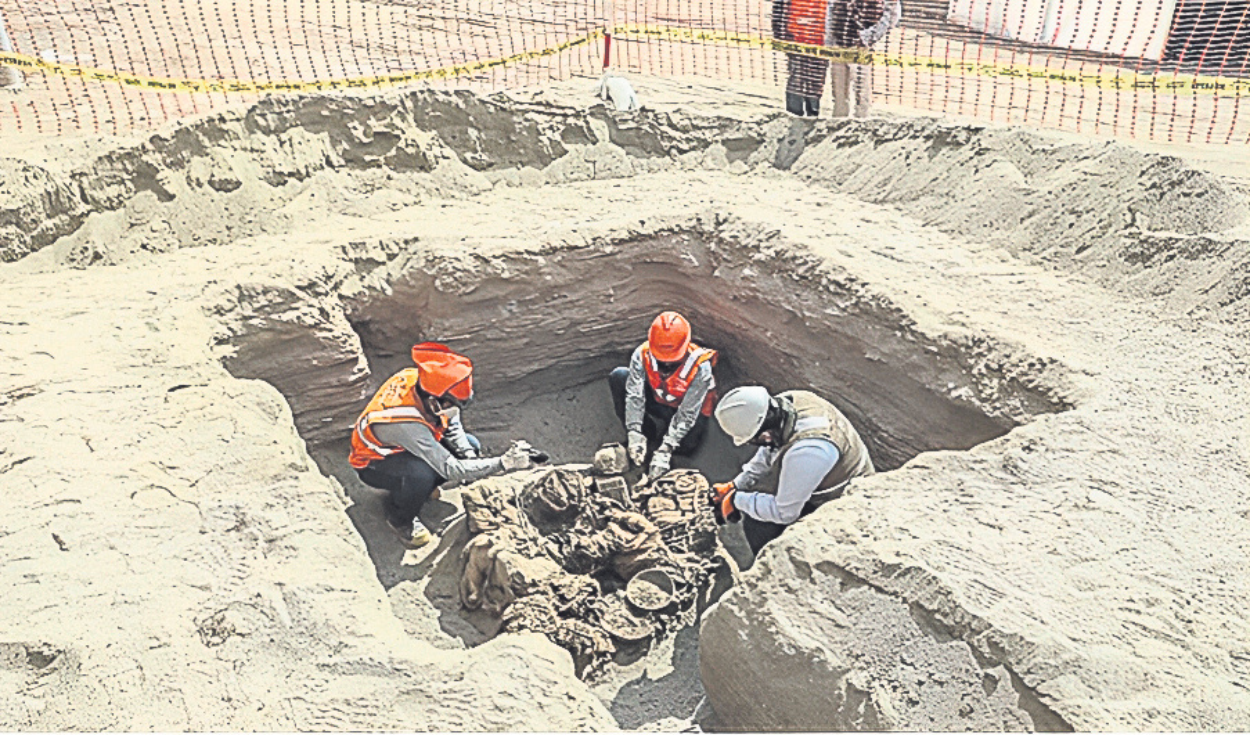
The Ministry of Culture (Mincul) has proposed deactivating one of the cornerstones for the protection of the nation’s heritage by publishing a draft supreme decree that modifies the regulations of Law 28296 and that, in practice, repeals the certificate of non-existence of archaeological remains (CIRA).
The CIRA is a document that certifies that in a certain polygon where roads, mines or agricultural fields, among others, may pass, there are no archaeological remains.
If the company requests a CIRA and it is determined that there is archaeological contentyou have several possibilities: give up or carry out an evaluation and remove all the remains, or carry out monitoring while doing the work.
It is a procedure recognized throughout the world and in Peru it is requested before the Mincul, which resolves it ex officio in 20 days. Otherwise, it is granted under administrative silence.
However, There are other procedures after the CIRA that can last 1 or 2 years.according to former Minister of Culture Luis del Castillo, due to a historical lack of resources in the sector, which the Ministry of Economy and Finance has never sought to exhaustively alleviate.
“When the land is new, they ask you to do monitoring, not an evaluation project. In this you hire an archaeologist on site and, if a remains is found, it is immediately raised. If it is important, it is communicated to the Mincul,” he says.
At that stage the businessmen complain. Getting permission for monitoring takes time, and once the report is finished it must be approved, and it is the same story because the mincul has in some jurisdictions a archaeologist to review 500 files.
The president of the National Society of Mining, Petroleum and Energy (SNMPE), Víctor Gobitz, agrees that the care of heritage is a non-negotiable principle. However, he recognizes that greater speed is needed to balance it with the “economic or infrastructure development of the country.”
“An archaeological remains found and valued can eventually be relocated. In Egypt there is an immense experience, for example. We are all in favor, but we must find the balance in reasonable terms,” Gobitz explained to La República.
However, this elimination of the CIRA now proposed by the Government, in an attempt to speed up some processes, does not mean that the other evaluations will not be carried out. Besides, would paralyze countless works because permits must be adapted with subnational governments.
Luis Jaime del Castillo explains that, instead, the Mincul promotes that the works begin and the existence of remains is verified as they go. This exposes engineers and project owners to penalties up to and including jail time.
There is also a perverse incentive, since there have been cases in which construction companies They hide the remains to continue their field work.
“Municipalities and the Ministry of Transport and Communications have always been the main enemies of archaeological regulation and have tried, until now without success, to have the CIRA eliminated, ignoring that this certification is not only the first line of defense of heritage. archaeological, but also protects the builder or investor from criminal and administrative responsibilities. Without the CIRA, any damage will be the exclusive responsibility of whoever executes a work,” Del Castillo tells this medium.
Mincul workers against the proposal
Through a letter, Mincul workers They expressed their rejection of the elimination of CIRA promoted by Minister Leslie Urteaga.
In addition to this, the College of Archaeologists of Peru has called for a sit-in that will take place on the esplanade of the Ministry of Culture in rejection of the proposed supreme decree. The demonstration is scheduled for today at 2:00 p.m.
The layout of the pipeline Shirt had a gigantic cost overrun because there was no CIRA. Hundreds of sites had to be excavated.
Between 2020 and 2023, some 17,300 CIRAs have been developed in Peru, according to official figures.
Source: Larepublica
Alia is a professional author and journalist, working at 247 news agency. She writes on various topics from economy news to general interest pieces, providing readers with relevant and informative content. With years of experience, she brings a unique perspective and in-depth analysis to her work.











